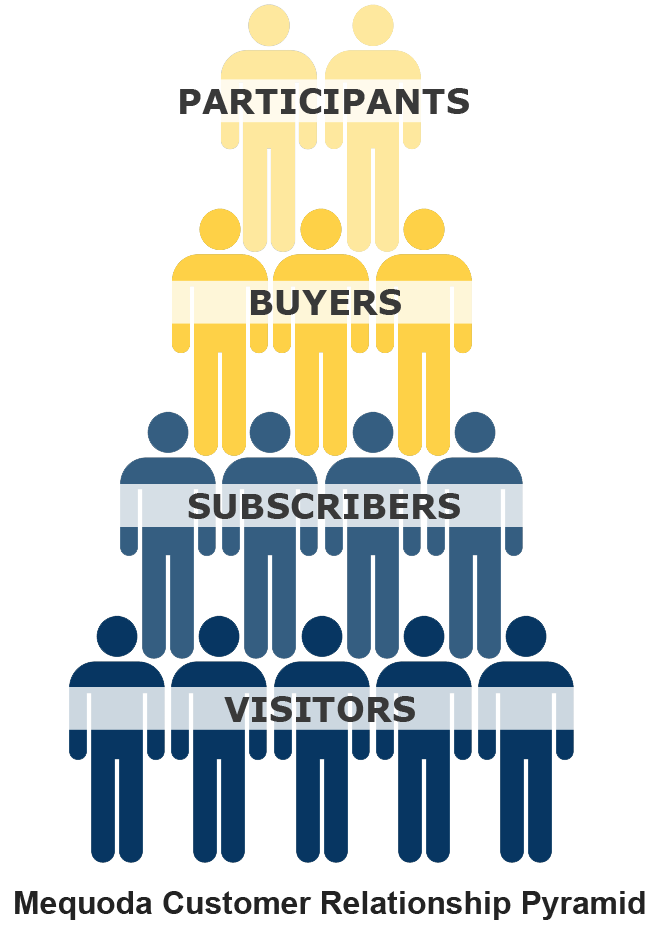Communicate to the right audience segment with the best possible message
Internet marketers are becoming more experienced at segmenting their customer database.
By targeting buyers and prospects separately with unique messaging, sales and revenues will increase. It only makes sense that someone who has already purchased from you should be communicated to in a different manner than someone new to your brand that hasn’t yet bought your products.
I’ve seen a very successful start at audience segmentation with Interweave’s customer database, as it’s gotten into the millions of relationships.
As there are many ways to define a relationship, I want to talk about four key relationship types that are important to acknowledge and to build your business around.
Four key relationship types

Website visitors: Website visitors attract tons of attention, often for the wrong reasons. These people are incorrectly treated as customers. Website visitors are Browsers who aren’t familiar with your brand. In most instances, you won’t know who they are either.
In fact, 80% of unique visitors who come to your website in a 12-month span will look at a few pages and will disappear. You should only care about attracting Browsers and communicating to them if you have content they’d be interested in.
Mequoda Systems are designed to convert website visitors, or Browsers, into subscribers and followers through conversion architecture. Our strategy puts email at the head of the parade, which averages a 4% visitor-to-subscriber conversion rate throughout the 41 benchmark systems we track.
[text_ad]
Subscribers: This relationship is completely different than a website visitor. Here, people have committed to us through email, Facebook, Twitter, LinkedIn and/or RSS. They know who we are and have interest in our brand. They’ve also taken action to communicate with us regarding our brand, our thoughts and how we view the world.
A substantial portion of what we send them is information on how they can acquire or access our premium information products. We aim to bring them to the monetization level by purchasing goods and services directly from us or from our sponsors.
Buyers: These individuals purchase products or services ranging from books and magazines to subscriptions and apps. In other instances, our communications are driving our customers to buy from our sponsors, everything from yarn to toothpaste.
In this relationship, it’s important to communicate with buyers when we are selling multiple products under our own brand. We need to find preferences on content, platform types and how they prefer to transact with us.
Participants: These people tend to be the most passionate, most involved and most committed audience members. They are the highest spenders and the most likely to pass information about products and events to friends and family. They represent the core of our best customer’s time and financial commitments. We always encourage messaging to them differently than you would to a buyer of a one-off product.
Regardless of your business type, whether you’re a non-profit or a major corporation, it goes without saying that without a margin, you have no mission. It doesn’t matter how large an audience you attract or database you obtain, if you can’t get them to spend money with you or your sponsors, you can’t maintain a long-term business.
If you’d like to discuss how open content is thriving, and the need to have an organization that produces open and closed content, then join us for the Mequoda System Strategy Workshop in New York City on October 27.
Remember, marketers aren’t only in the business of building an affinity audience; they must also craft communications to people who are spending more time and money with their brands and their sponsors. Like the 80/20 rule states, 20% of your audience is supporting 100% of your economic effort and it is key to treat this 20% uniquely.


